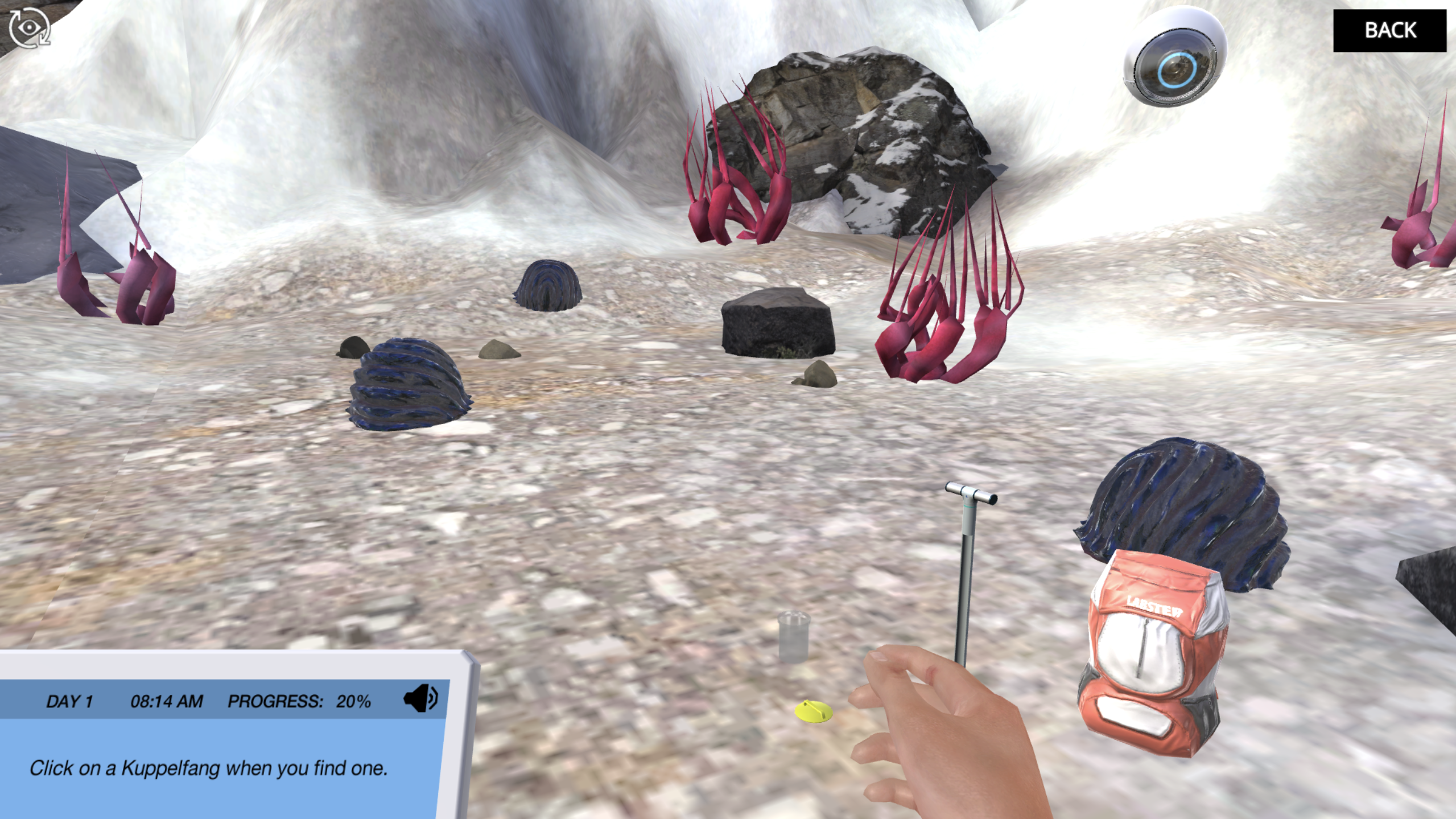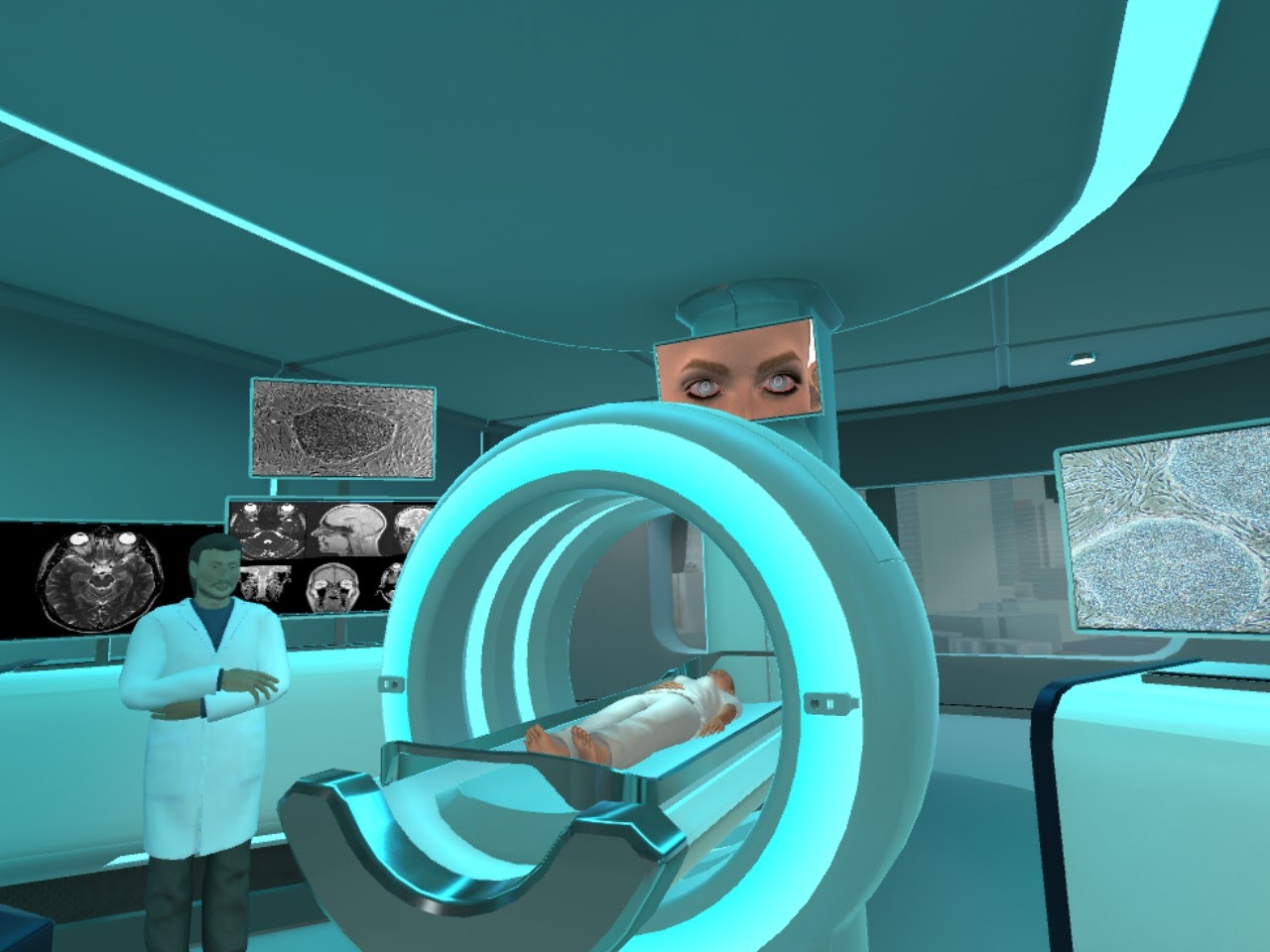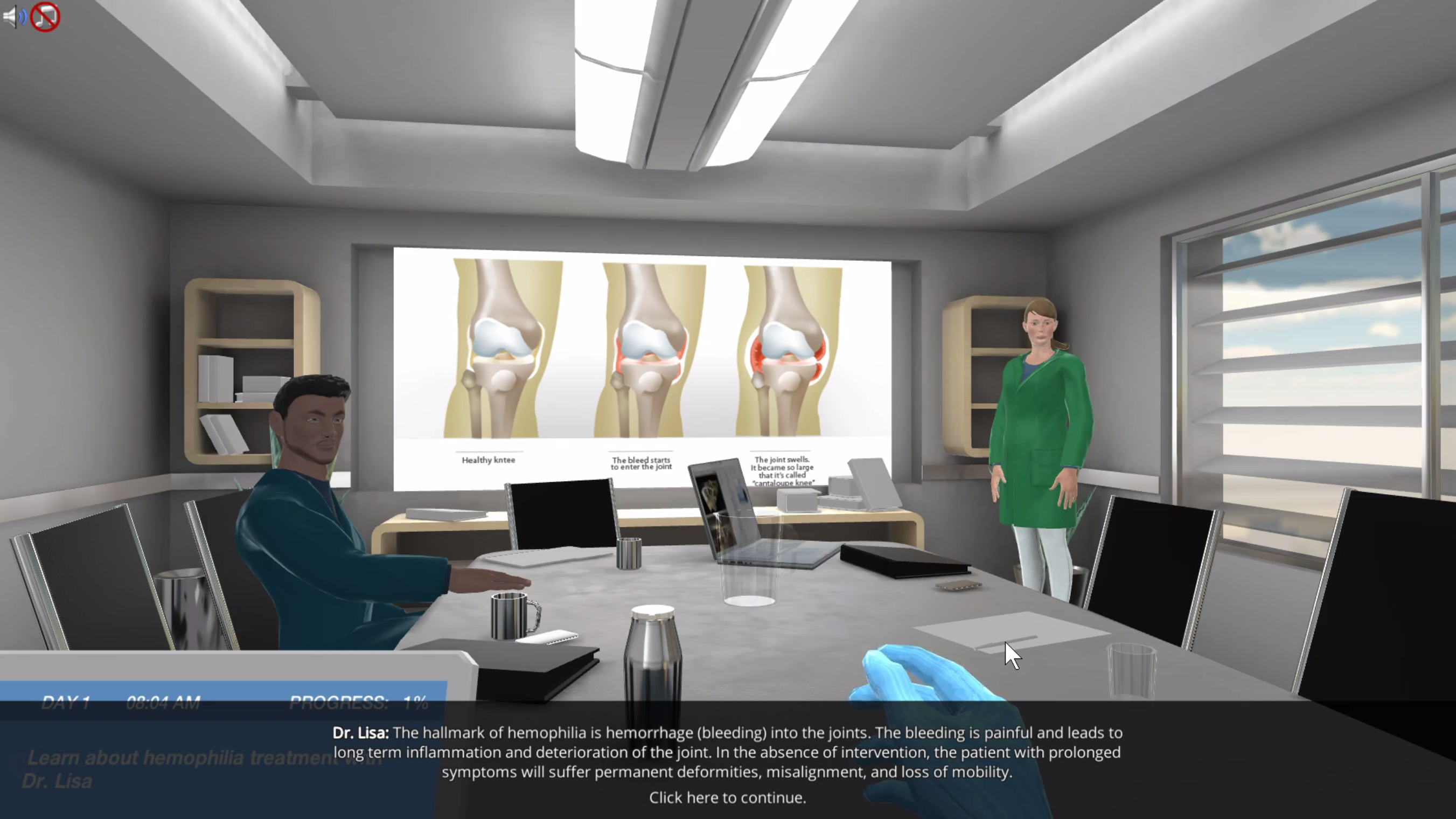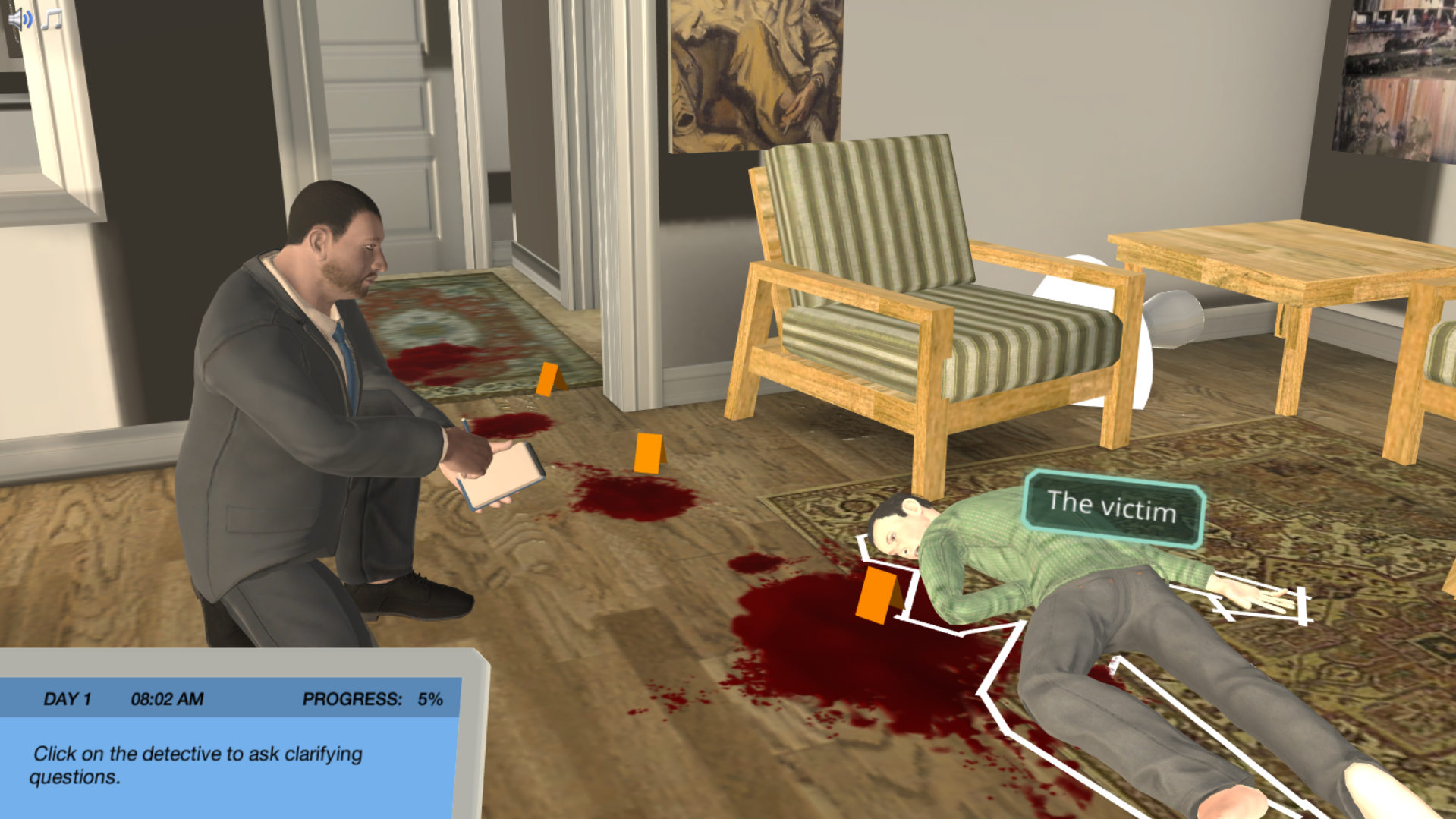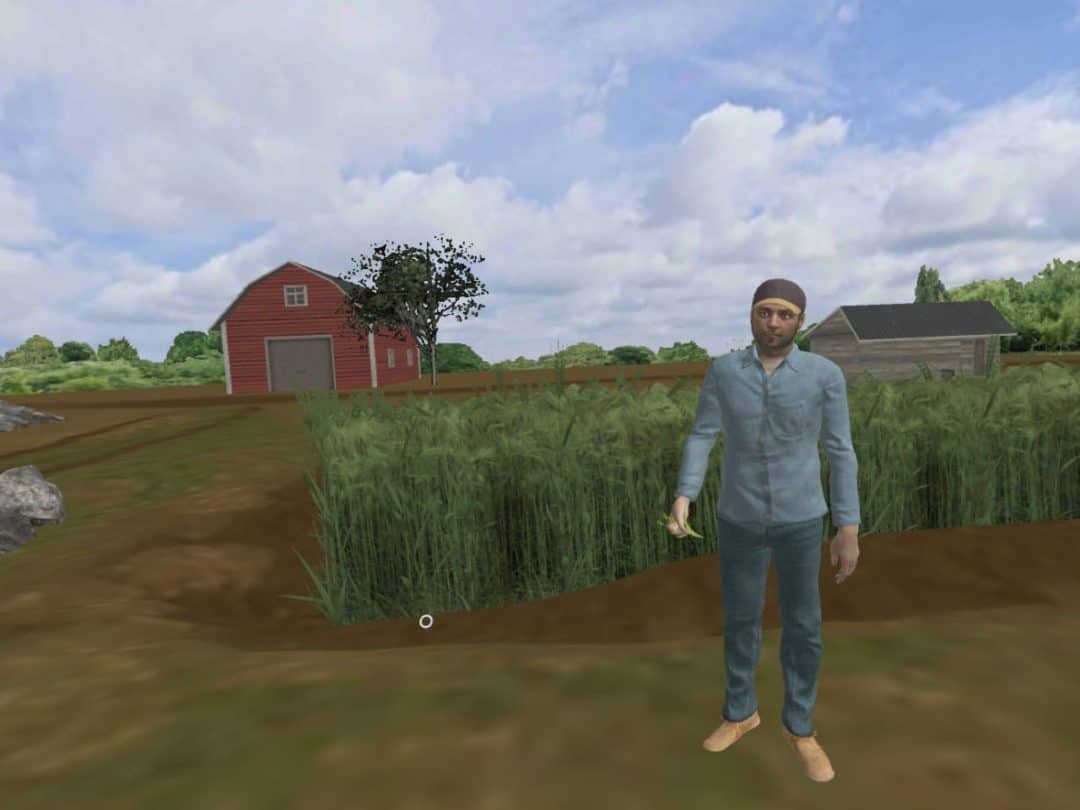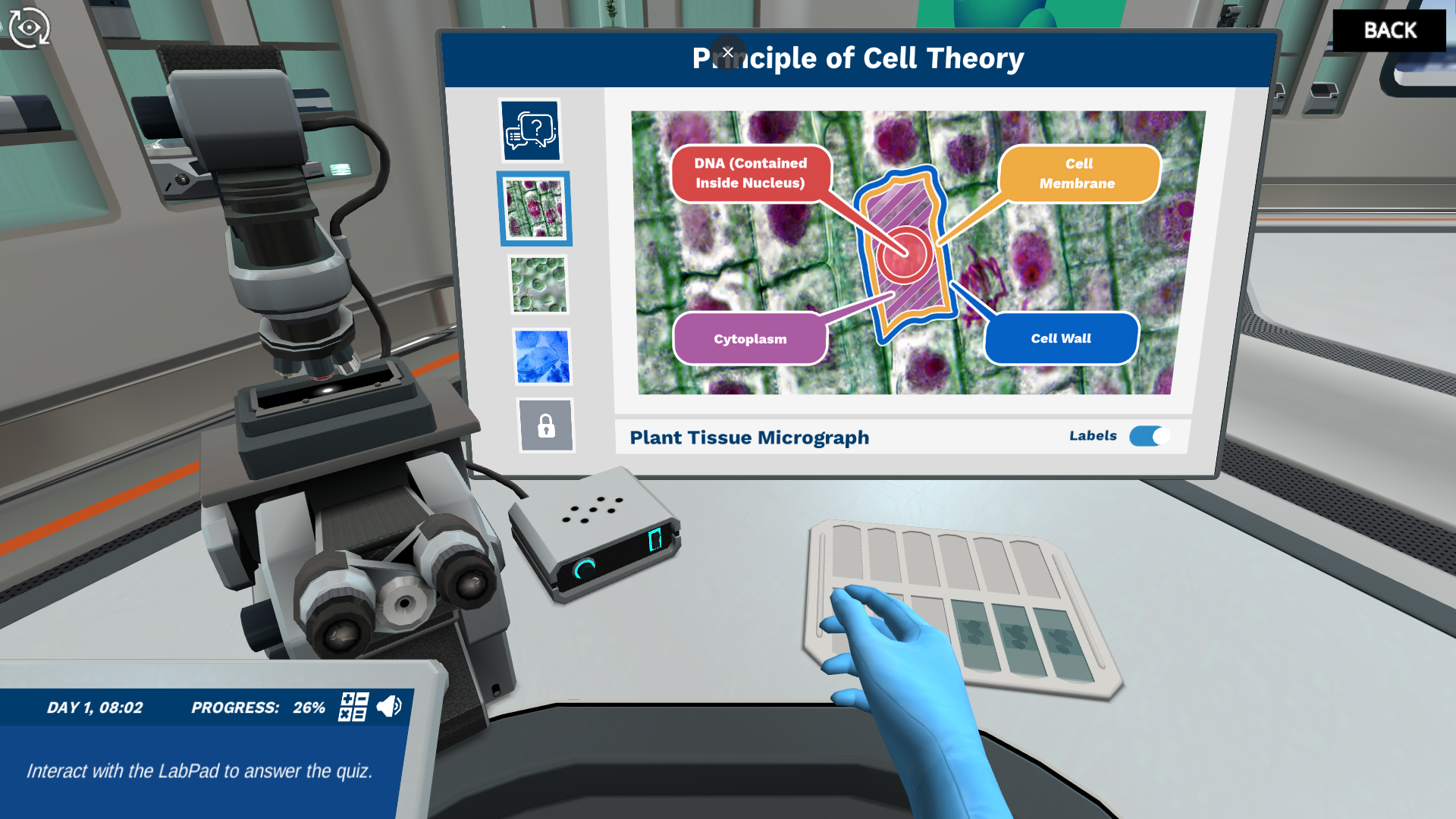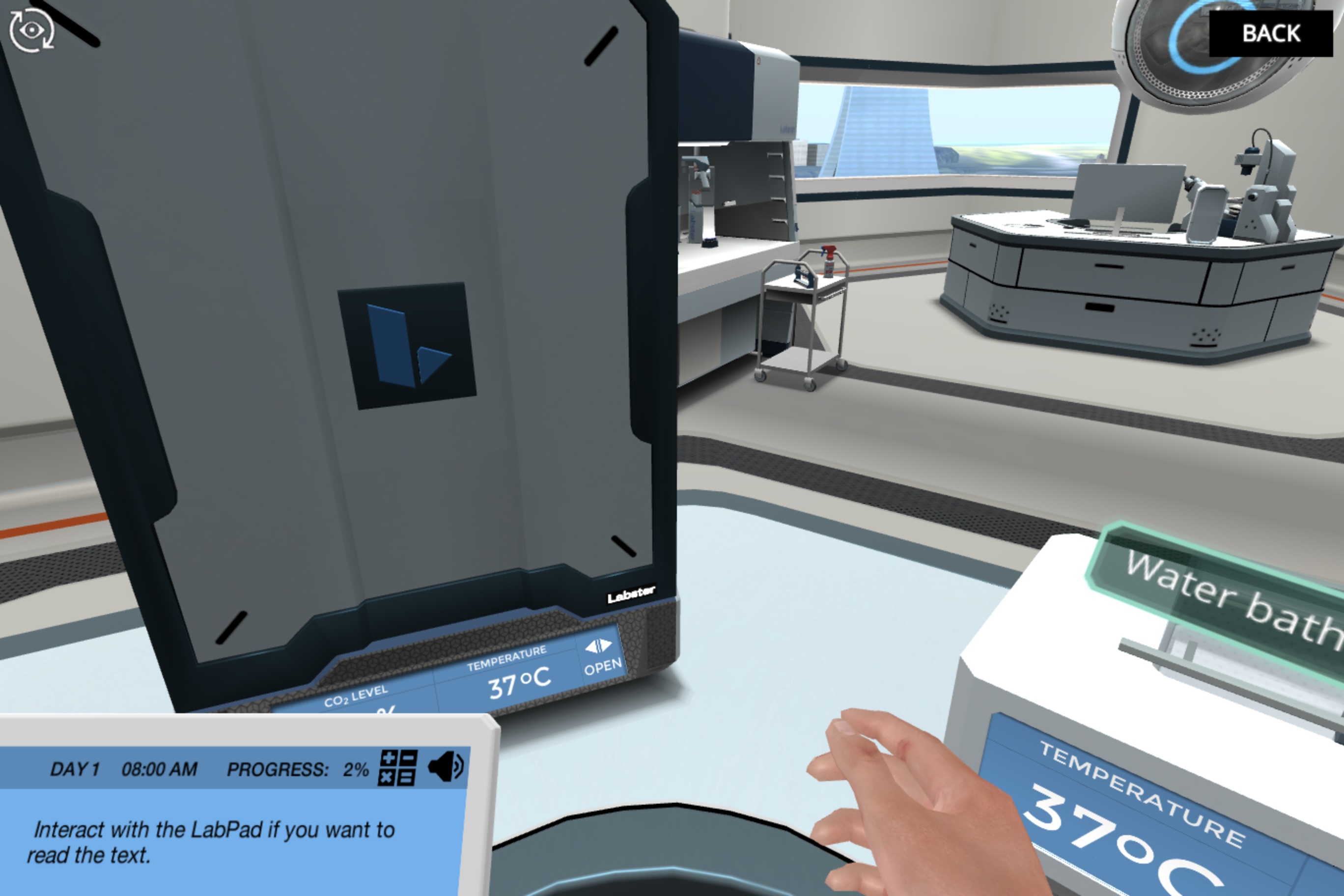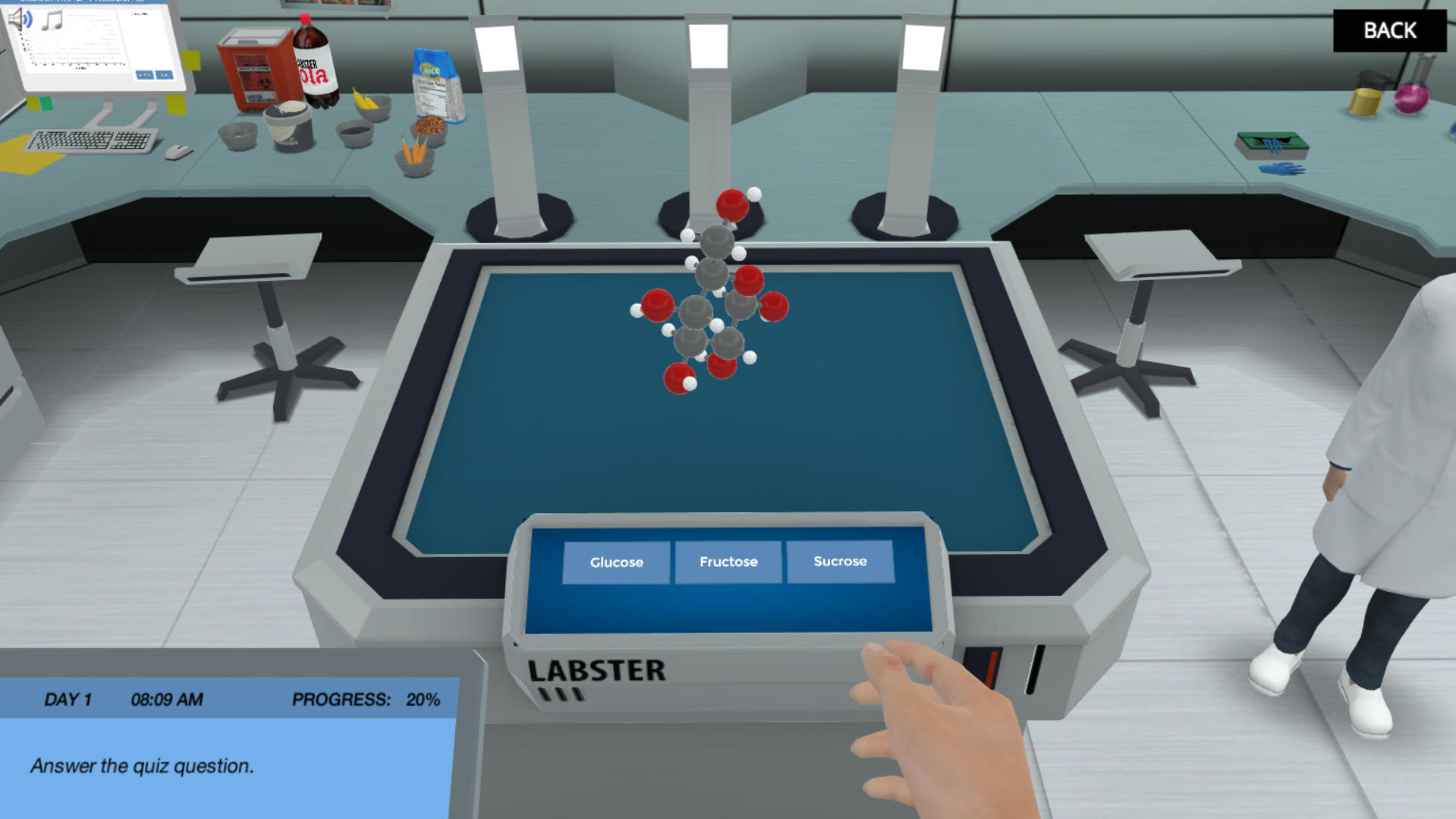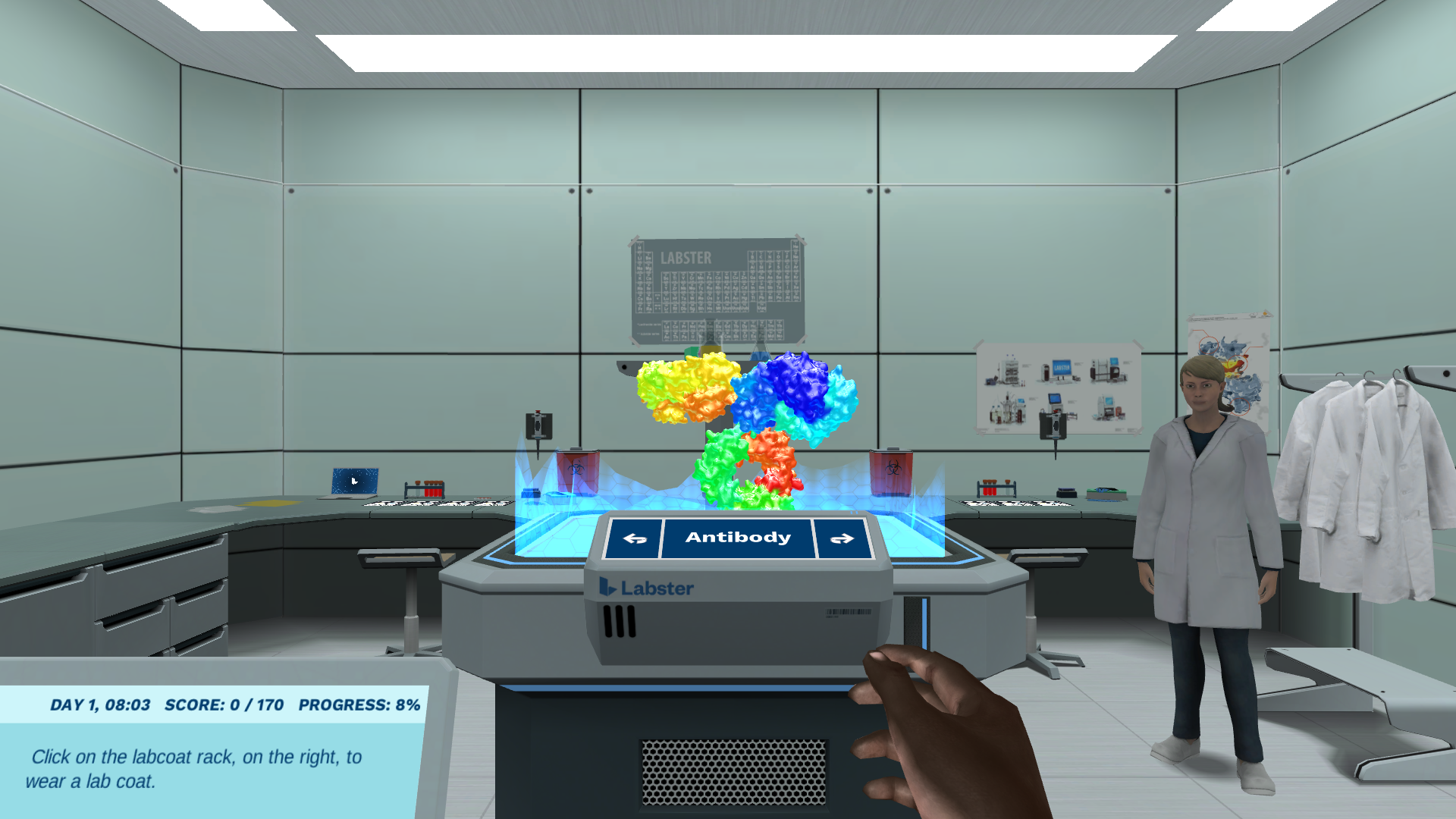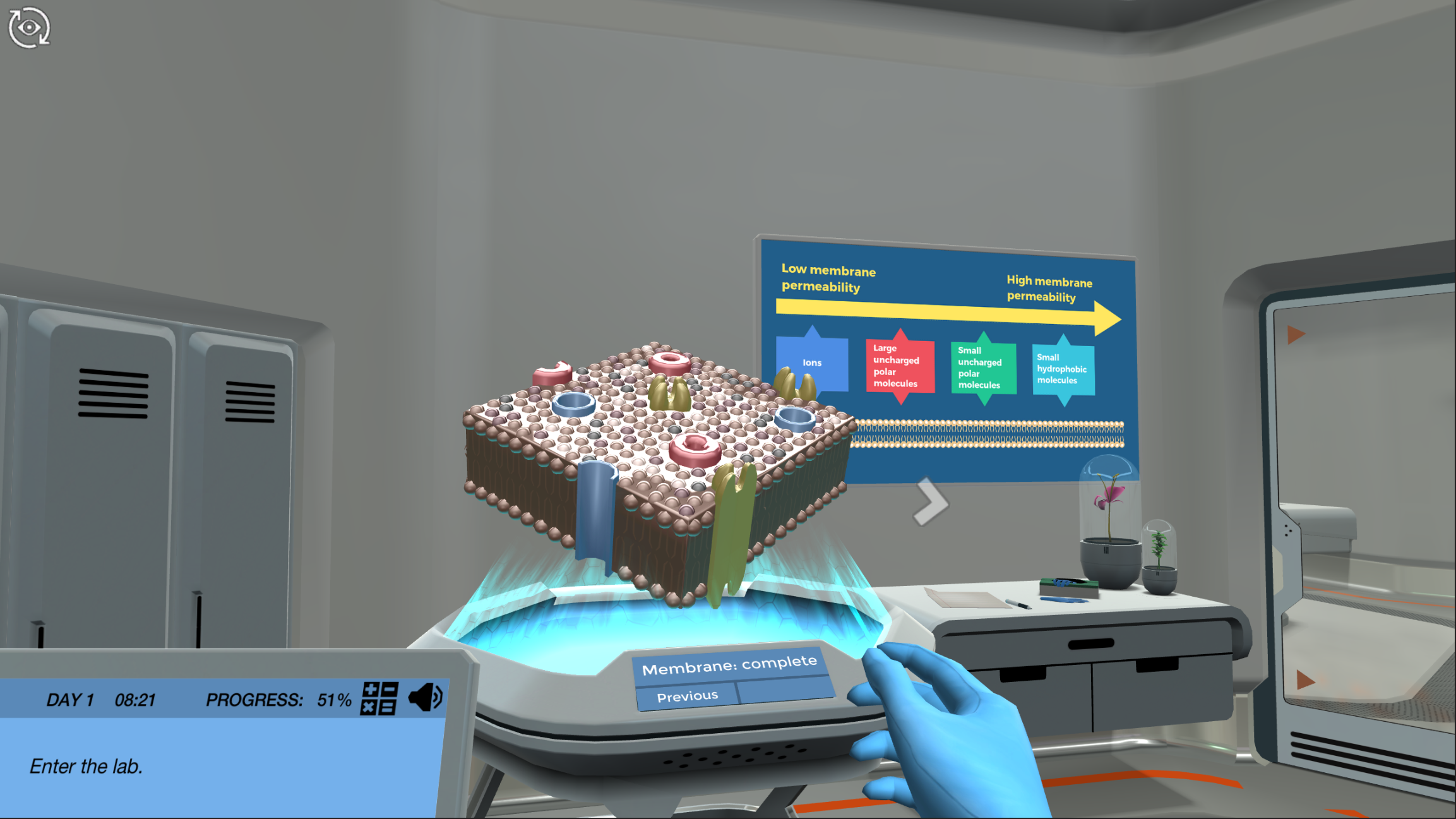Collection Simulations
Protein Synthesis
Explore the structure of proteins and learn about the synthesis process inside the cells. Examine the protein sequence to understand the differences of protein synthesis in prokaryotes and eukaryotes.
Microscopy
Analyze the microscopic structure of the small intestine and learn the advantages and limitations of light, fluorescence and electron microscopy.
Molecular Cloning
Dive into recombinant DNA technology with cell division, transcription and translation. Includes concepts in restriction enzymes, cloning and reporter genes.
Enzyme Kinetics
Investigate Alcohol Flush Syndrome by studying Alcohol Dehydrogenase kinetics. Learn how to use a spectrophotometer, perform an enzyme kinetics experiment, analyze data and understand different inhibition mechanisms.
Western Blot Transfer: Prepare for protein detection
Join Dr. One and two colleagues on their mission to cure cancer. They are using Western blot to compare the level of p53 protein in cancerous and healthy control cells. Can you help Dr. One with the tricky membrane transfer step?
Introduction to Protein Synthesis
Explore the structure of proteins and learn about the synthesis process inside the cells.
Chemistry Safety: Hazard symbols
Join lab assistant Marie to find out how to decide on the correct laboratory practice and personal protective equipment when dealing with hazardous chemicals. Learn the meaning of the hazard symbols and apply your knowledge with some example chemicals.
Perform a Dry Western Blot
Perform a western blot experiment to ultimately provide data and knowledge to identify a promising treatment for breast cancer. Investigate the connection between blood vessel growth and cancer development, by understanding signal transduction.
Spectrophotometers: Building and exploring the instrument
Build your own spectrophotometer to discover how you can measure substances with light
Bioinformatics: An introduction
Embark on a mission to identify the metabolic pathway that produces an antimalarial compound in a rare plant. Can you begin the process of creating a novel antimalarial drug?
Gel Electrophoresis: Visualize and separate nucleic acids
Solve a crime by using DNA fingerprinting to identify a thief. Use nucleic acid gel electrophoresis to separate and visualize DNA molecules and watch an animation to understand what happens inside the gel tank.
Aseptic Technique: Culture your sample without contamination
Help a microbiologist prepare a pure culture that can be used to identify a microbe causing an infection! Use good aseptic technique to avoid contamination of the sample, ensure your own safety, and avoid surprise fires in the lab.
Spectrophotometry: Learn the Beer-Lambert law with absorbance experiments
Build your own spectrophotometer to measure the absorbance of a reaction product on Mars!
Solution Preparation: From salt to solution
Join your fantastic lab guide Dr. One in preparing a tricky aqueous solution of ammonium chloride using an analytical balance, which your colleagues need for an important analysis.
Synthetic Biology
Join cutting edge research at MIT and design a biological circuit that can sense and destroy cancer cells.
RNA Extraction: Sample and purify mRNA from pigs
Learn how to extract RNA from pig fat tissue samples and how to purify messenger RNA using magnetic beads.
Pigment Extraction: Use photosynthesis to produce biofuel and reduce pollution
Relevant pigments using different solvents and measure their absorbance spectra to help a group of engineers figure out if a mysterious dark algae is able to absorb green light. Your work will help create a sustainable plan for energy production that will use sunlight, heat from a coal power plant, and nutrients from a fish farm.
Next Generation Sequencing
Learn the different steps of sample preparation, sequencing, data collection and data analysis using next generation sequencing technique.
Ecological niches: Choose the right Kuppelfang to bring to Earth!
Investigate why the Kuppelfangs died when transplanted to the new Astakos IV biodome on Earth. Quantify their realized and fundamental niche, and explore how acclimation affects the boundaries of a niche.
Gene Regulation
Open your eyes to the vast potential of gene regulation, where you can reprogram cells into any cell that fits your needs. Will you able to help the doctor in restoring the sight of a visually impaired girl?
Gene Expression Unit: Use sequencing to unveil a gene linked to obesity
Discover Next Generation Sequencing by analyzing the mRNA from pig tissues and identify a new gene linked to obesity. Confirm your results using qPCR to analyze the expression levels of your gene!
ELISA
Help a scientist detect and quantify proteins by using one of the most popular techniques in molecular biology.
Polymerase Chain Reaction
Learn the techniques and application of Polymerase Chain Reaction and Gel Electrophoresis. Explore a real-world application, such as analyzing unique genetic fingerprints to solve a murder case.
Confocal Microscopy
Join this virtual confocal microscopy lab and learn how to take pin-sharp confocal micrographs and 3D renderings. Use the knowledge to save your uncle’s crop from a mysterious plant disease.
Cell Structure: Cell theory and internal organelles
Explore different cell samples under the microscope to identify the differences between eukaryotes and prokaryotes. Build the structure of an animal cell and choose the internal organelles of four specialized cells.
Cell Culture Basics: Plate, split and freeze human cells
Find out what it’s like to work in a cell culture laboratory. Learn how to use the aseptic technique to avoid contamination of your cells, and discover what it takes to keep them alive.
Carbohydrates: The sugars that feed us
The Carbohydrates Lab explores how carbohydrates are broken down by the digestive system and taken up into the bloodstream.
Antibodies: Why are some blood types incompatible?
Learn about the concepts of antibodies and antigens, as well as the ABO and Rhesus blood grouping systems and their importance in blood transfusions. Then, you will help a young couple determine a potential risk for Rhesus disease in their unborn child.
Cell Membrane and Transport: Learn how transporters keep cells healthy
Discover the structure and function of cell membranes by launching cargo molecules at a virtual cell. Apply your learning back in the lab to improve the health of synthetic cells that the lead researcher wants to use to produce insulin.
Boost STEM Pass Rates
Boost Learning with Fun
75% of students show high engagement and improved grades with Labster
Discover Simulations That Match Your Syllabus
Easily bolster your learning objectives with relevant, interactive content
Place Students in the Shoes of Real Scientists
Practice a lab procedure or visualize theory through narrative-driven scenarios




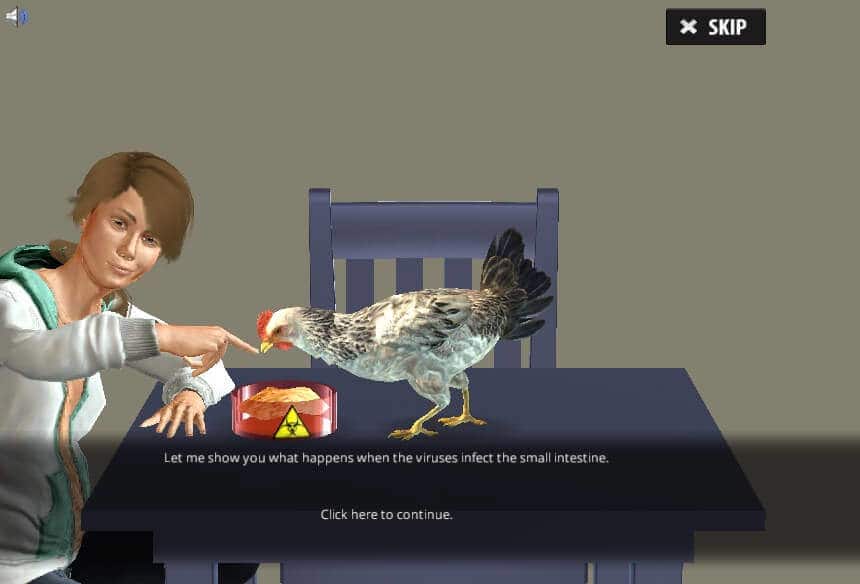
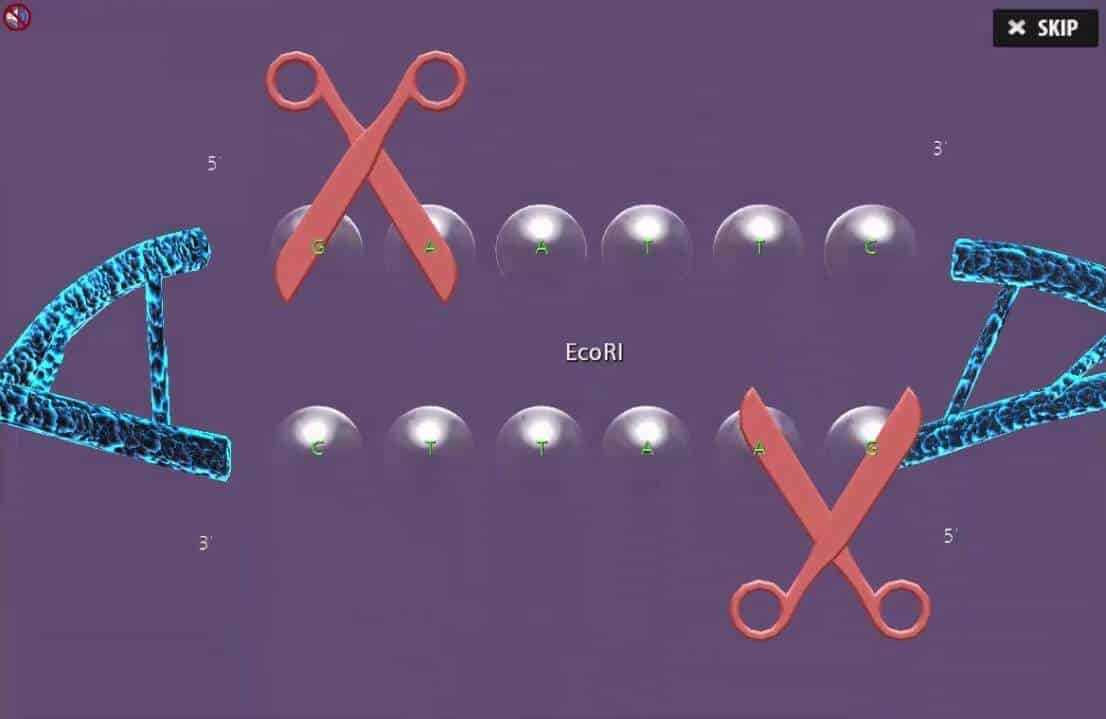
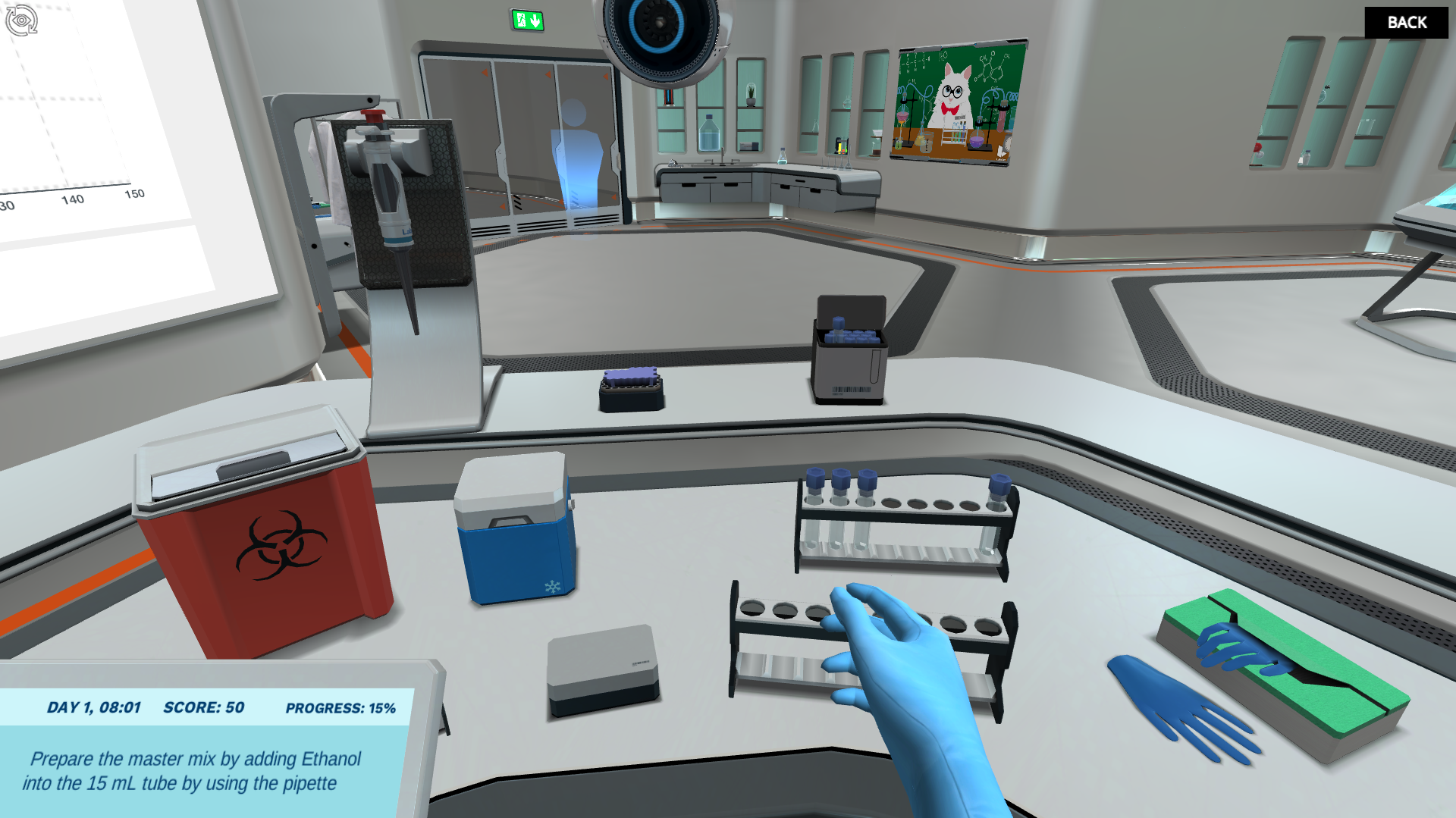
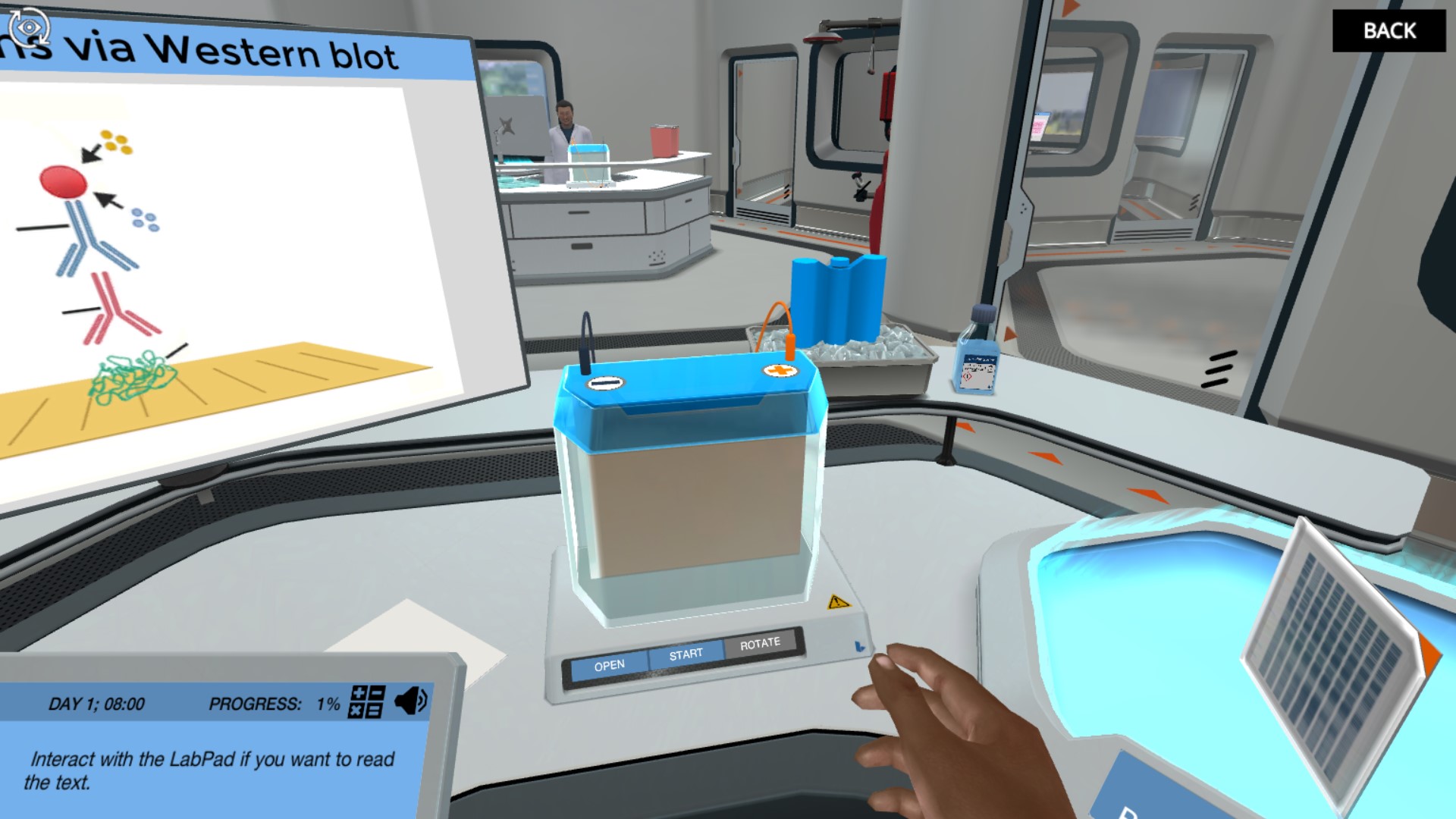
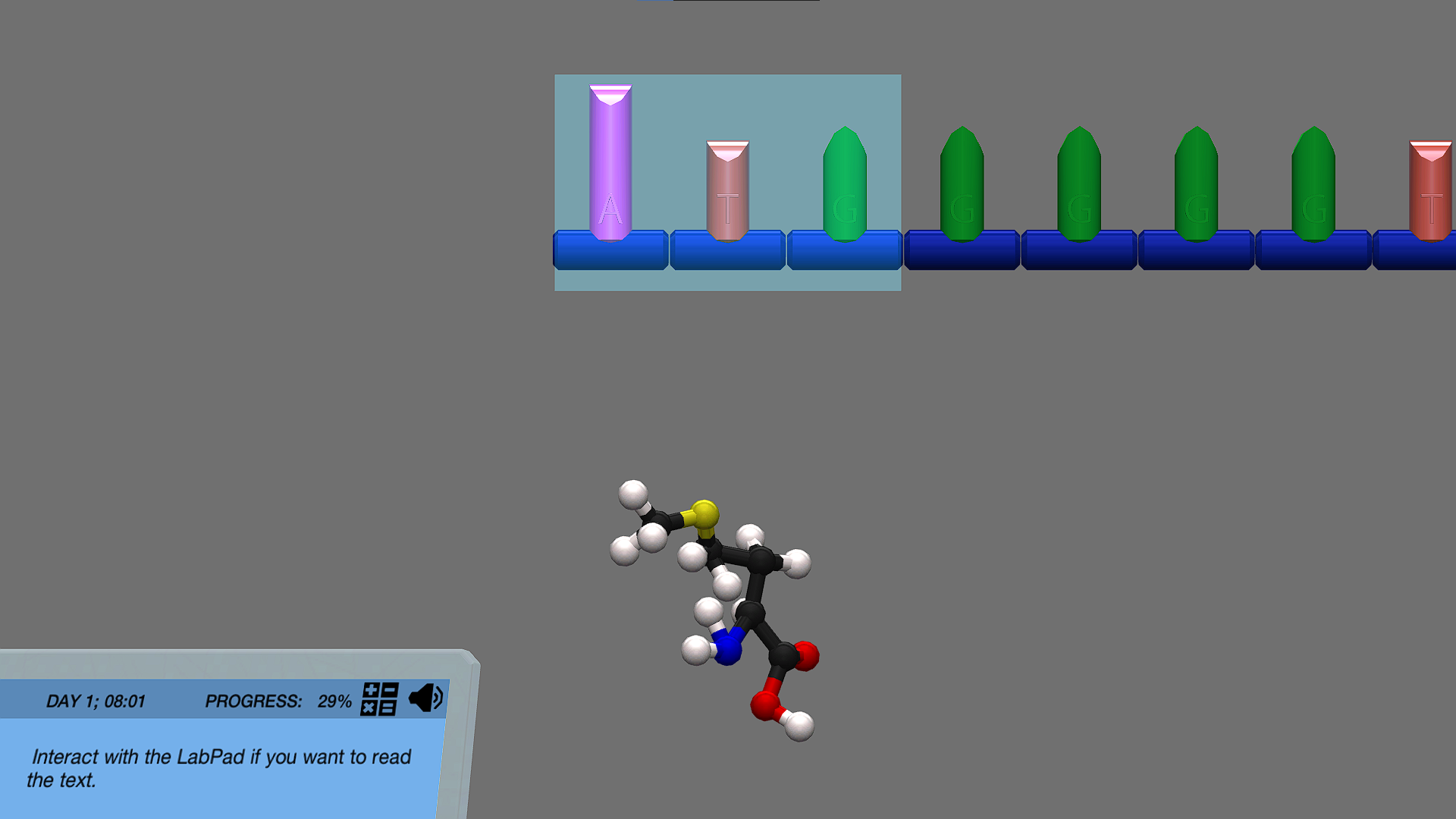
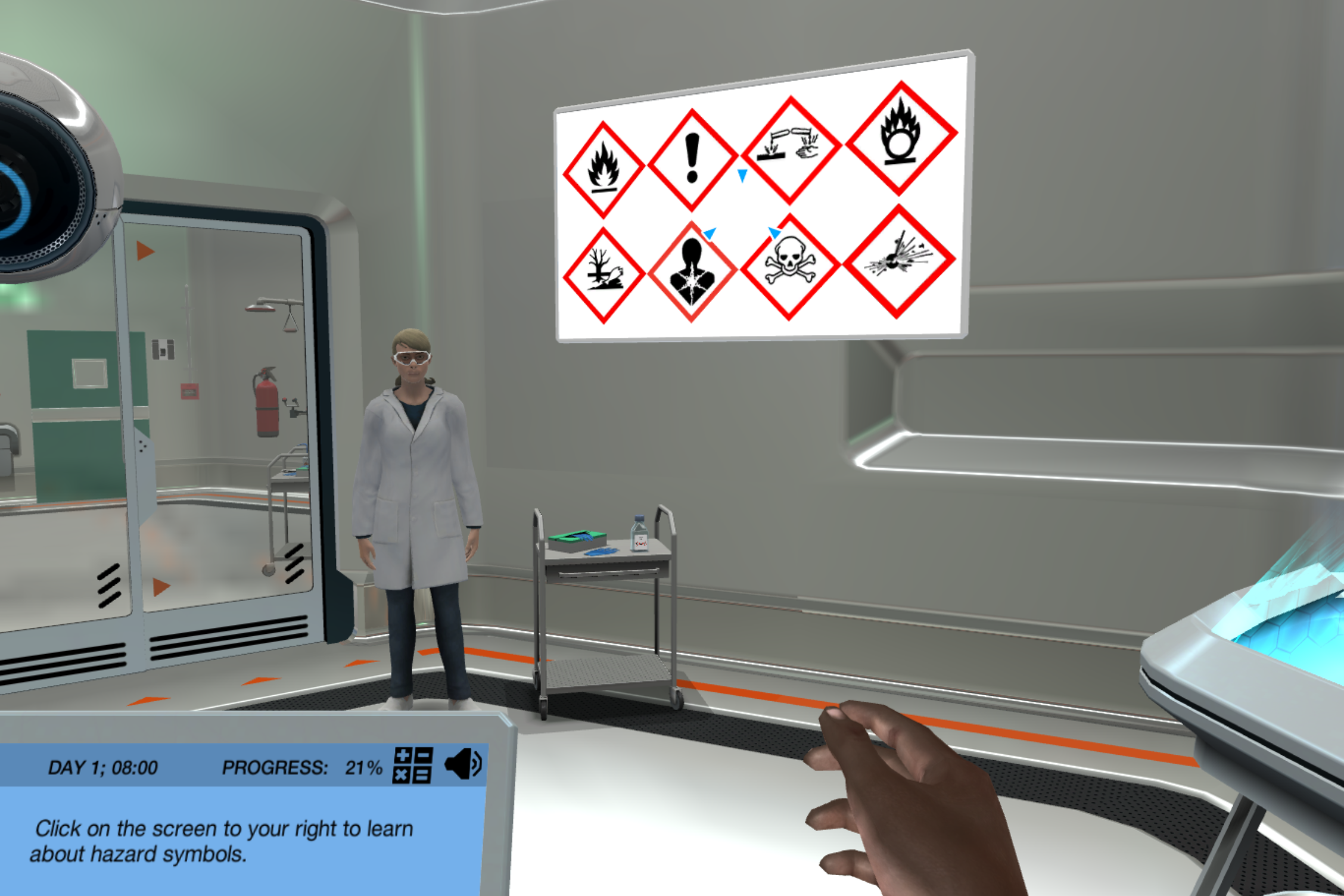


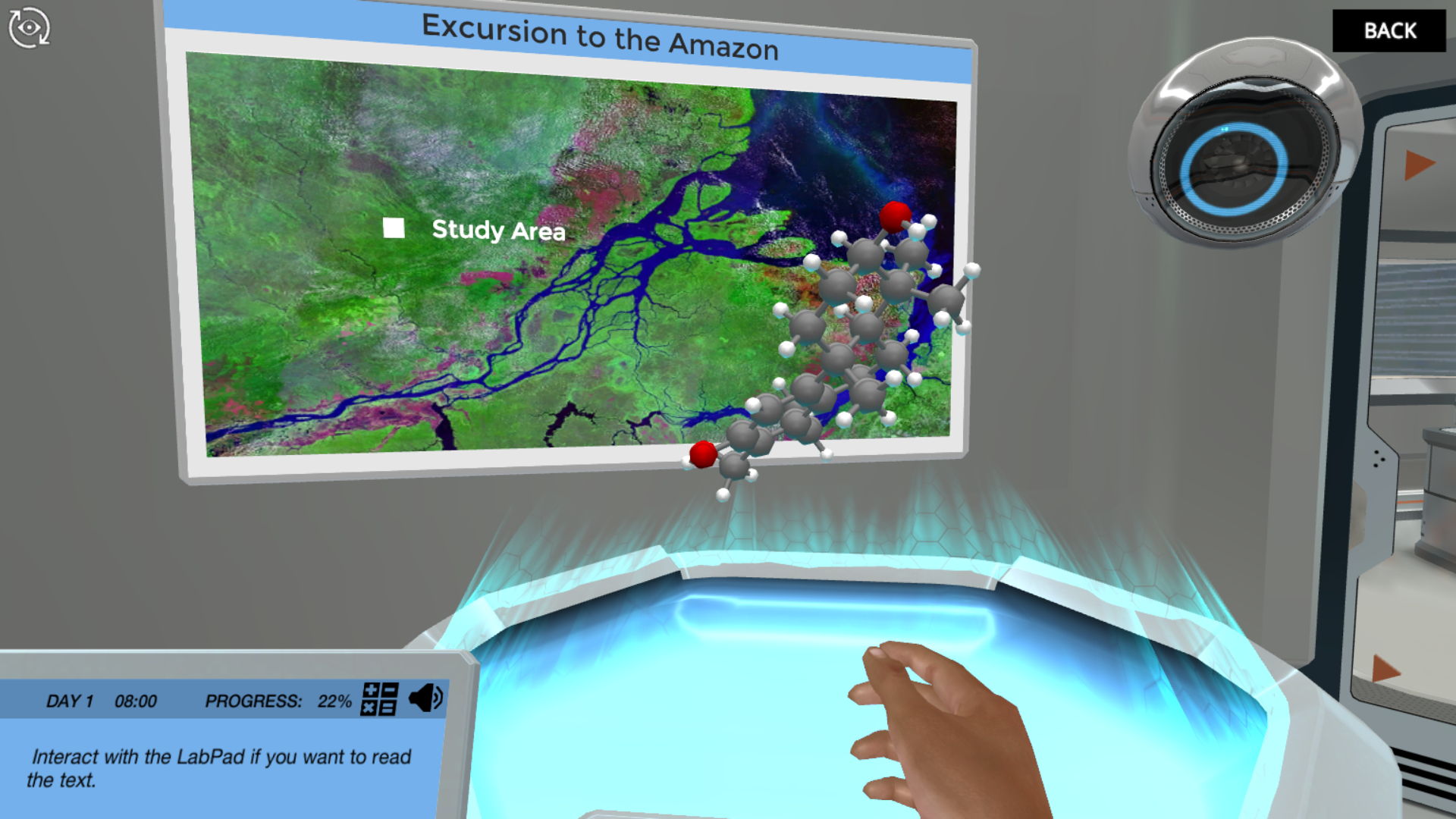
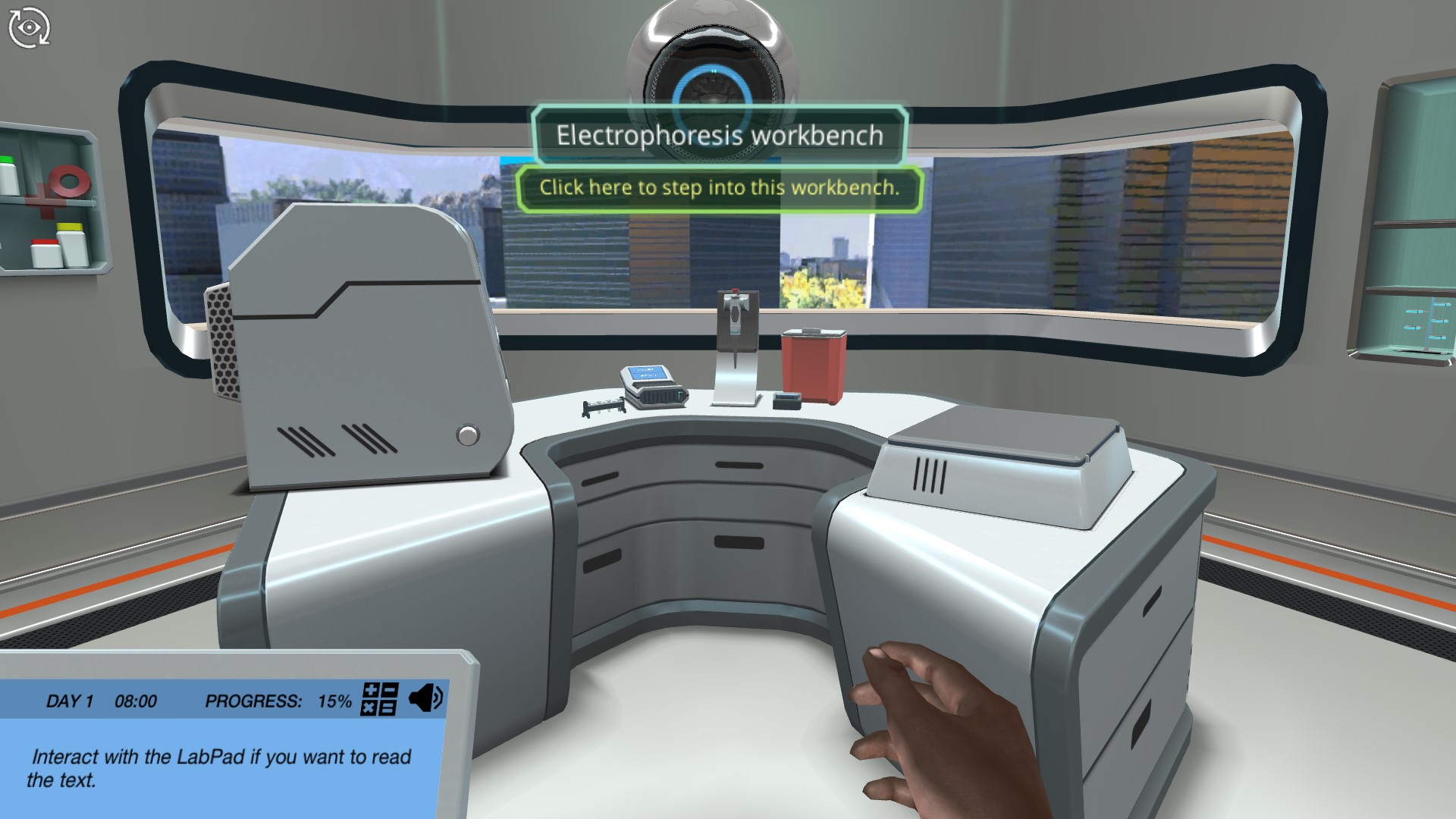
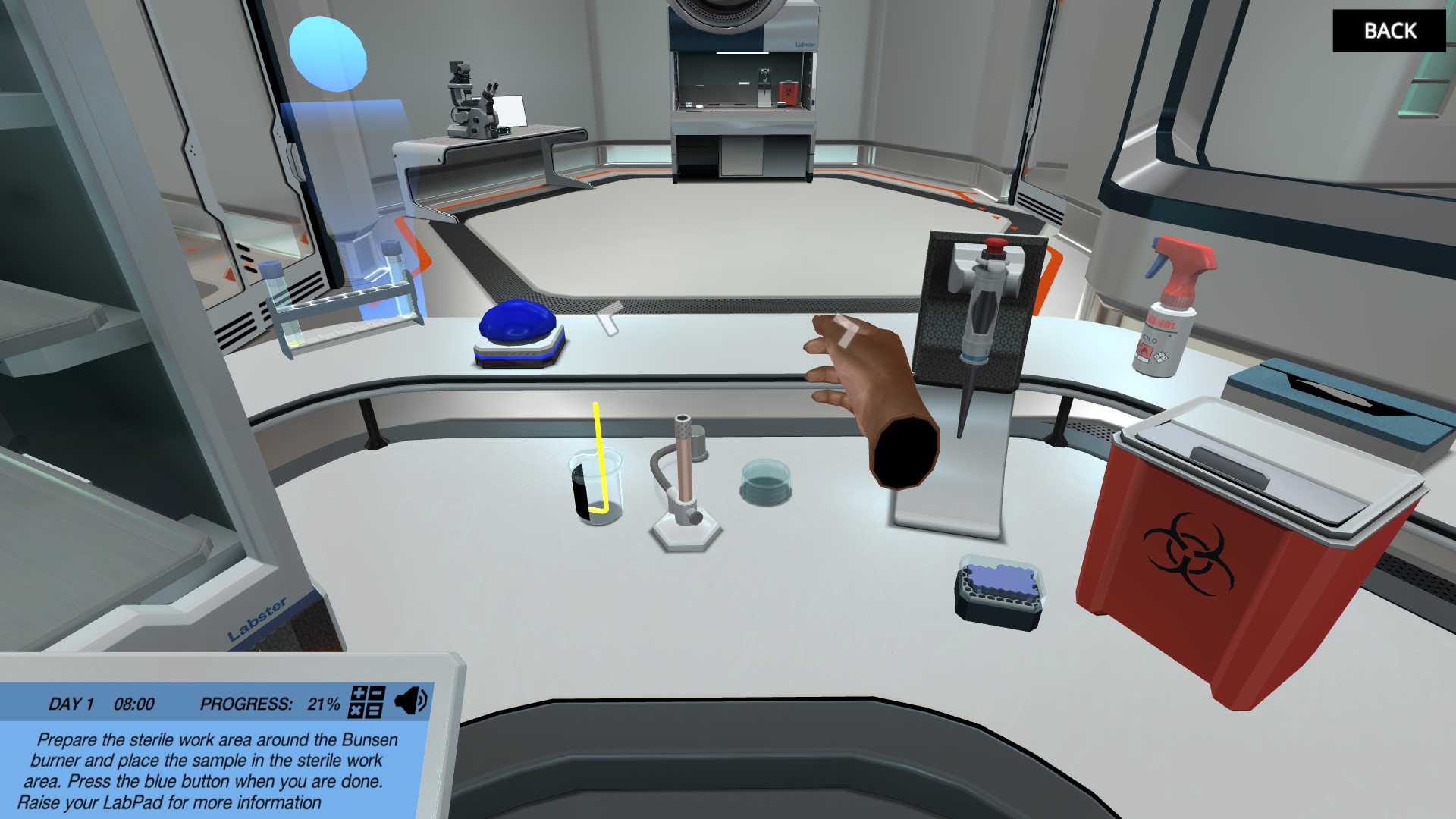
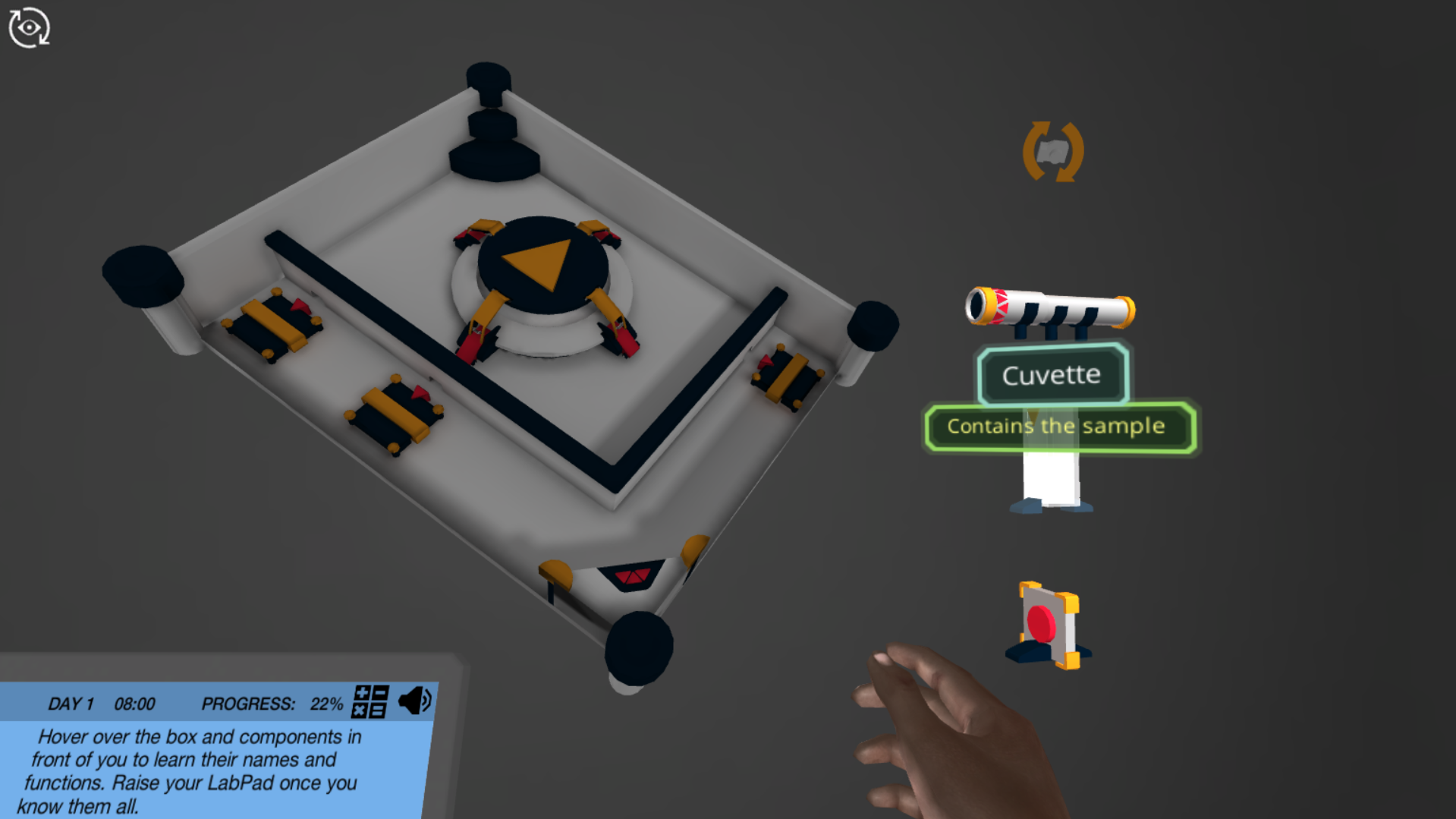

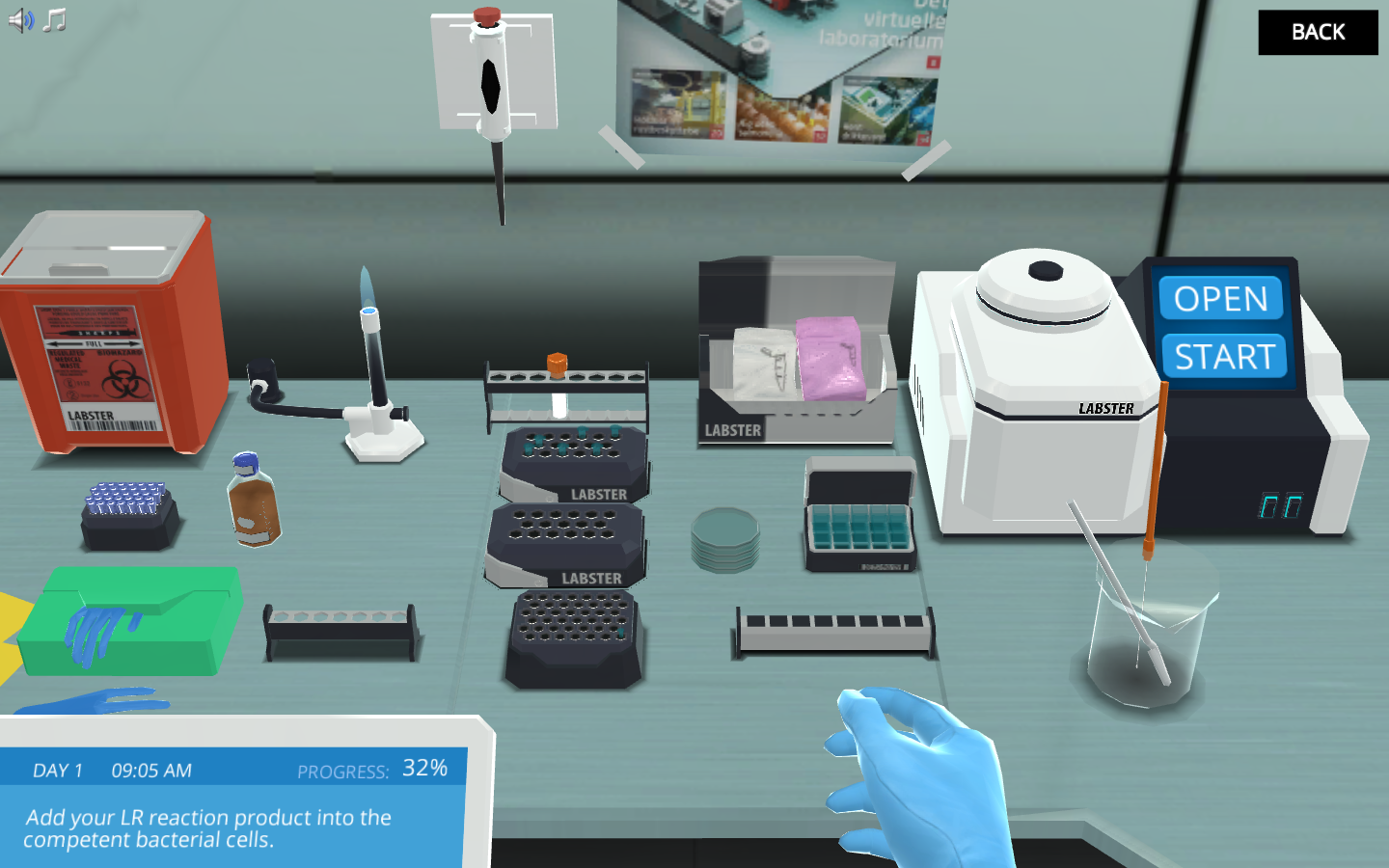
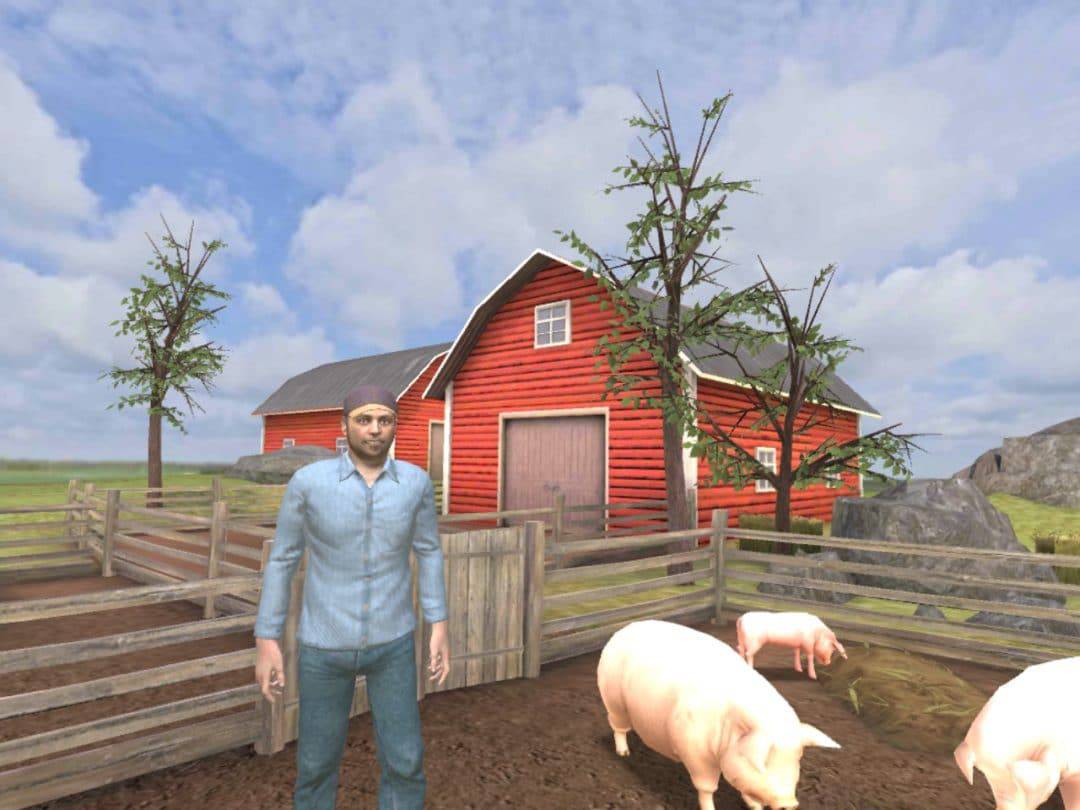
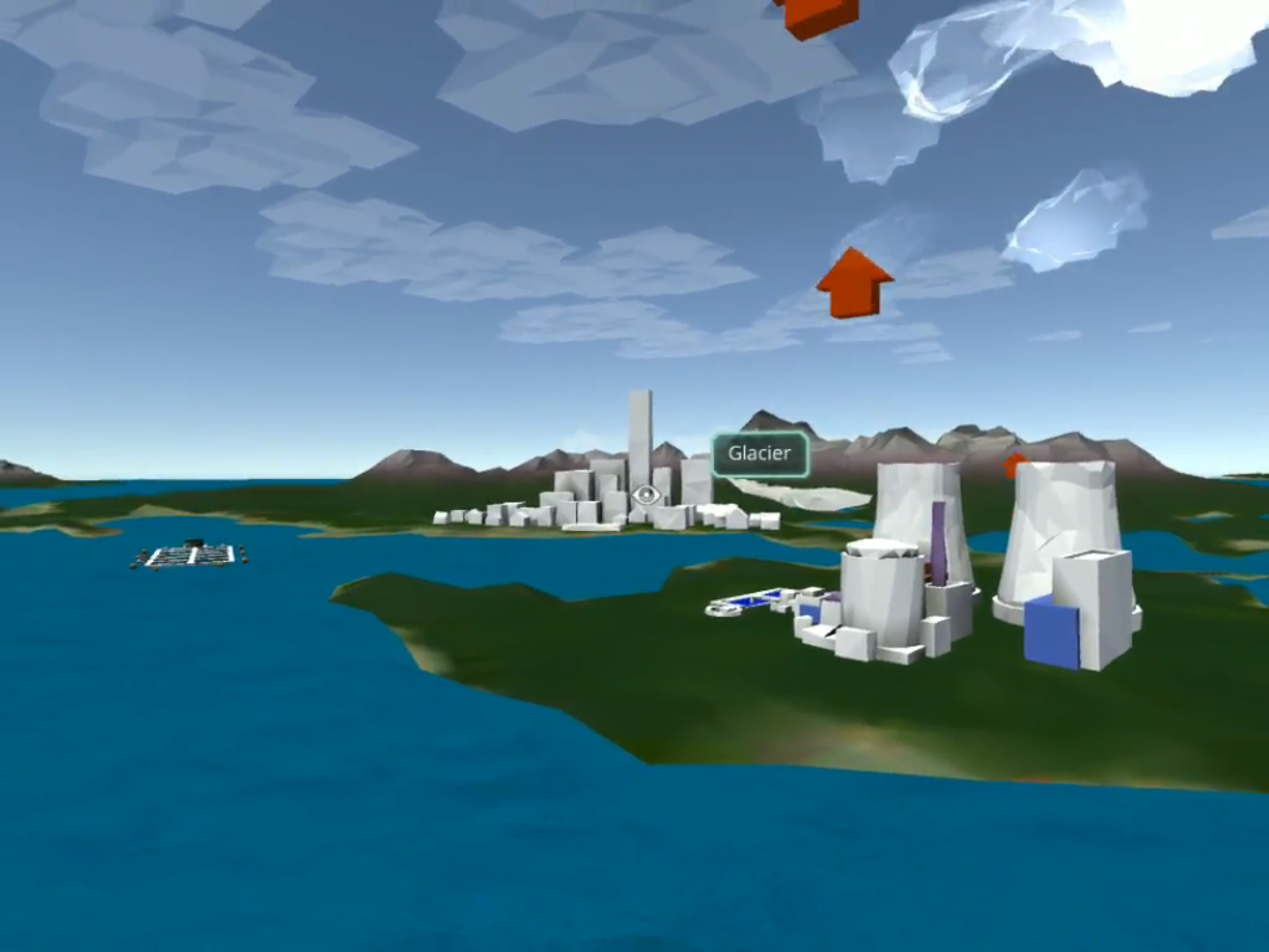
.png)
